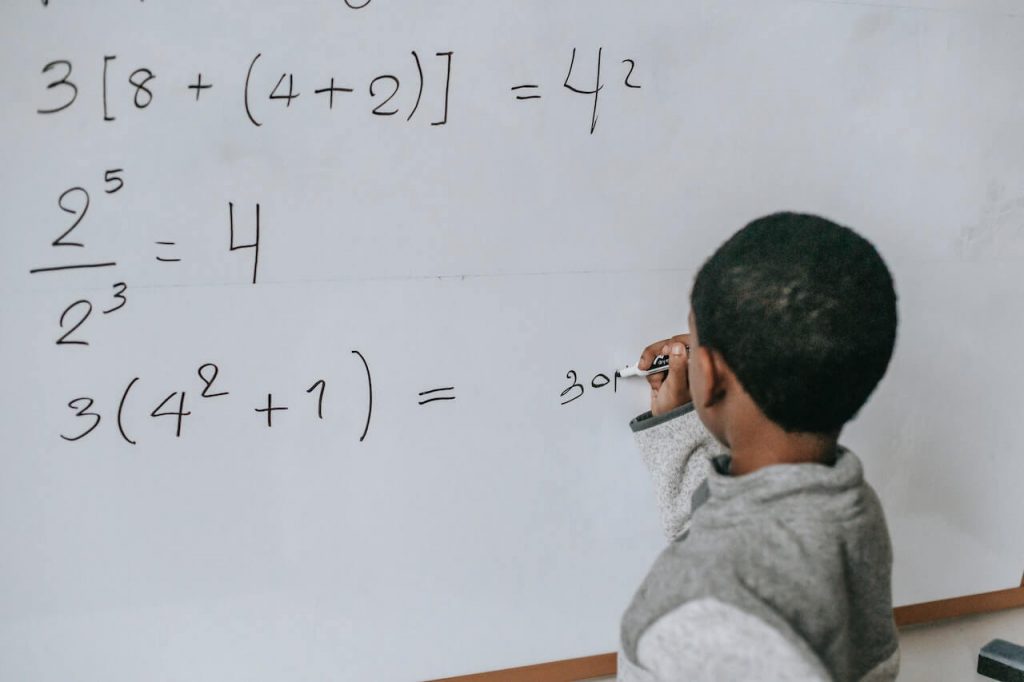Mathematics has long been viewed as a daunting subject by many, causing anxiety and frustration for students of all ages. However, with the right mindset and effective strategies, mastering numbers can become an enjoyable and achievable endeavor. In this article, we will explore practical approaches to mastering numbers, enabling learners to build a strong foundation and develop confidence in their mathematical abilities. By implementing these strategies consistently, students can unlock the door to mathematical success.
Mathematics is not a subject reserved for a select few; it is a language of logic and problem-solving that can be understood and appreciated by anyone. Unfortunately, the perception of math as an intimidating and incomprehensible discipline has deterred many individuals from embracing its beauty and practicality. By approaching math with curiosity, adopting a positive mindset, and employing practical strategies, we can unravel its complexities and make the journey of learning math a rewarding one.
Understanding the Importance of a Positive Mindset
Mathematics can be intimidating, but having a positive mindset is key to overcoming challenges. Embrace the belief that math is a skill that can be developed with practice and effort. Cultivate a growth mindset, understanding that mistakes are opportunities for learning and improvement. By adopting a positive attitude towards math, you open the door to success and pave the way for effective learning.
Mastering the Basics

Just as a sturdy building requires a solid foundation, mastering math begins with a strong understanding of the basics. Ensure that you have a firm grasp of fundamental concepts, such as arithmetic operations, number properties, and fractions. Take the time to review and reinforce these core principles, as they provide a solid framework for tackling more complex mathematical concepts in the future. Practice basic arithmetic operations and work with fractions until you feel comfortable and confident in your abilities.
Visualizing Math
Numbers and equations can often feel abstract and disconnected from the real world. To demystify math, employ visual aids that make concepts more tangible. Utilize diagrams, charts, and manipulatives to represent mathematical ideas visually. For example, when learning about fractions, use fraction bars or circles to demonstrate the concept of part-whole relationships. When solving algebraic equations, use visual representations like balance scales to illustrate the concept of equality. By incorporating visual elements, learners can develop a deeper understanding of mathematical concepts and establish stronger connections to real-life scenarios.
Real-Life Applications

One of the most effective ways to engage with math is by discovering its relevance in everyday life. Seek out real-life applications of mathematical concepts. For example, when baking, involve children in measuring ingredients, understanding ratios, and observing how math plays a role in creating a delicious recipe. When planning a budget, use math skills to calculate expenses, savings, and investments. By connecting math to practical situations, learners develop a deeper understanding and appreciation for its significance. Look for opportunities to apply math in your daily life and encourage critical thinking and problem-solving skills in real-world scenarios.
Problem-Solving Strategies
Problem-solving lies at the heart of mathematics. Equip yourself with a toolkit of problem-solving strategies, such as breaking down complex problems into smaller, manageable parts, identifying relevant information, and employing logical reasoning. When faced with a challenging math problem, take a systematic approach. Analyze the problem, identify what is being asked, and consider the steps needed to reach the solution. Break down the problem into smaller, more manageable components and tackle each part individually. Use logical reasoning to guide your problem-solving process and always double-check your answer for accuracy. With consistent practice, these problem-solving strategies will become second nature, empowering you to navigate mathematical challenges with confidence and efficiency.
Leveraging Technology

In the digital age, technology offers a wealth of resources to aid in math learning. Take advantage of educational apps, online tutorials, and interactive tools that provide engaging and personalized learning experiences. Explore math-specific websites that offer step-by-step explanations and interactive practice exercises. Utilize online platforms that allow you to track your progress and provide instant feedback. Additionally, consider using math-related software or applications that provide visual representations, simulations, and interactive games to reinforce learning. Technology can be a valuable tool in enhancing understanding and making math learning more interactive and enjoyable.
Collaborative Learning
Don’t underestimate the power of collaboration. Engage in group discussions, join study groups, or seek help from classmates, teachers, or online forums. Explaining and discussing mathematical concepts with others fosters a deeper understanding and different perspectives. Peer support can provide valuable insights, clarify misconceptions, and create an encouraging learning environment. When working with others, take turns explaining concepts or solving problems, engage in meaningful discussions, and challenge each other with thought-provoking questions. Collaboration allows you to learn from diverse perspectives and strengthens your grasp of mathematical concepts.
Embracing Mistakes

Mistakes are an inherent part of the learning process. Instead of fearing mistakes, embrace them as opportunities to grow. Analyze errors, identify misconceptions, and learn from them. Recognize that struggling with a math concept is not a reflection of your abilities but a stepping stone toward mastery. Keep a record of your mistakes and the lessons learned from them. By reframing mistakes as learning opportunities, you develop resilience and perseverance in your mathematical journey. Celebrate the progress you make with each mistake, as it brings you one step closer to mastery.
Consistent Practice
Practice makes perfect, and this holds true for math learning as well. Regularly practice a wide range of problems to reinforce your mathematical skills. Start with easier exercises and gradually progress to more challenging ones. Repetition helps solidify understanding, build fluency, and enhance problem-solving abilities. Dedicate time each day to deliberate practice, focusing on the areas that require improvement. Use math workbooks, and online practice platforms, or create your own sets of practice problems. By consistently practicing a variety of math problems, you develop confidence in your abilities and become adept at applying different strategies to solve them.
Celebrating Progress

Acknowledge and celebrate your mathematical achievements, no matter how small they may seem. Recognize the progress you have made, and use it as fuel to propel you forward. Developing confidence in your mathematical abilities is crucial for continued growth and success. Celebrate milestones, overcome self-doubt, and embrace the joy of mastering numbers. Set goals for yourself and celebrate each milestone you achieve along the way. Share your achievements with others, whether it’s your teacher, classmates, or family members. By celebrating progress, you build a positive association with math and reinforce your motivation to continue learning and improving.
Demystifying math and mastering numbers is an empowering endeavor that requires patience, dedication, and the right tools. By embracing a positive mindset, building a strong foundation, visualizing math, exploring real-life applications, employing problem-solving strategies, leveraging technology, collaborating with others, embracing mistakes, practicing consistently, and celebrating progress, learners of all ages can overcome math anxiety and develop proficiency in mathematical skills.
Remember, the goal is not merely to solve math problems but to develop a deep understanding of mathematical concepts and their applications. Each step taken on this journey brings us closer to unlocking the potential that mathematics holds. So, let us embark on this path with enthusiasm, embracing the challenges, celebrating the victories, and transforming math from a mysterious subject to a realm of knowledge and discovery. With the right approaches, mastering numbers becomes an empowering skill that opens doors to countless opportunities and paves the way for success in various academic and professional pursuits.


Leave a Reply